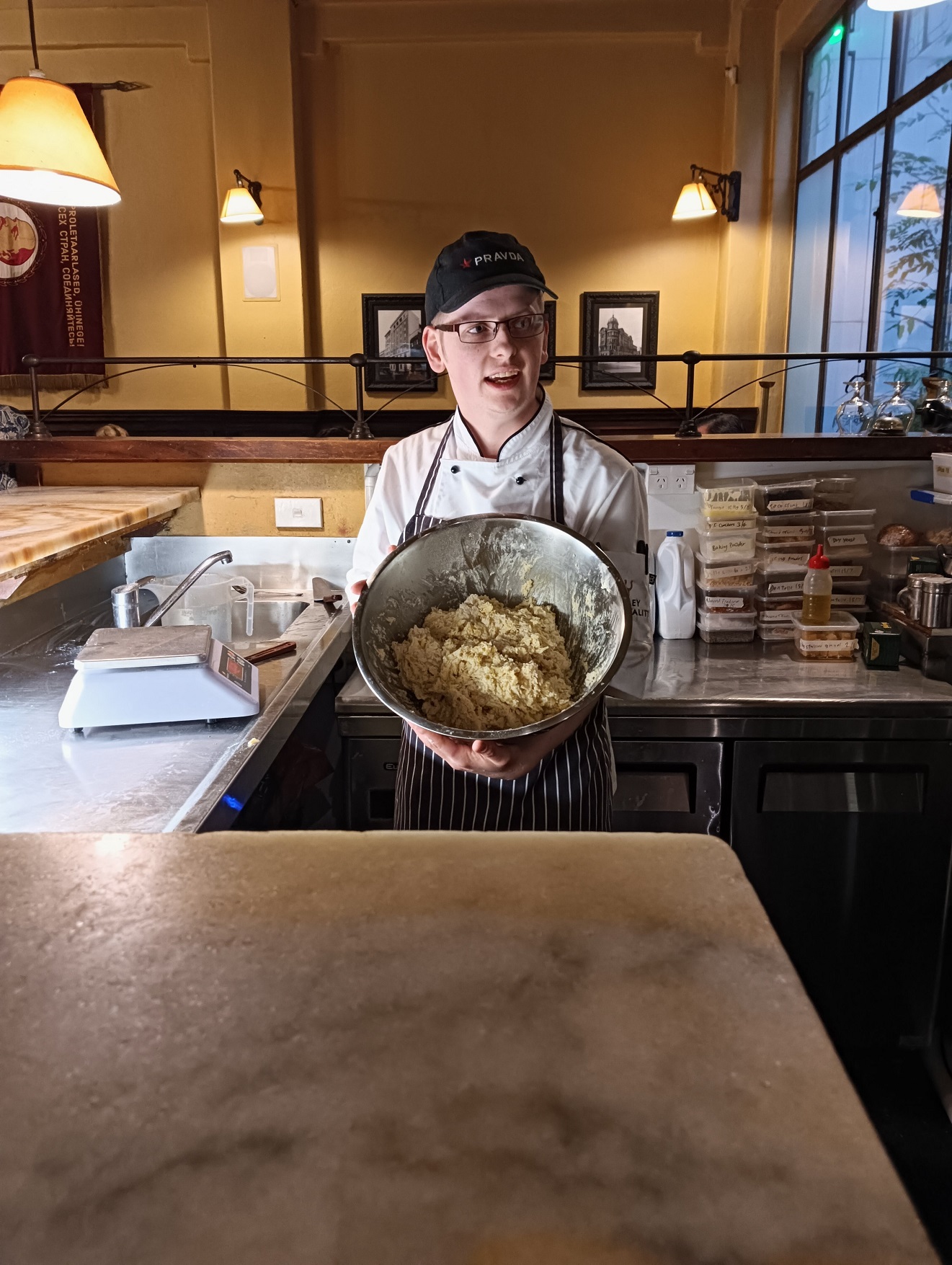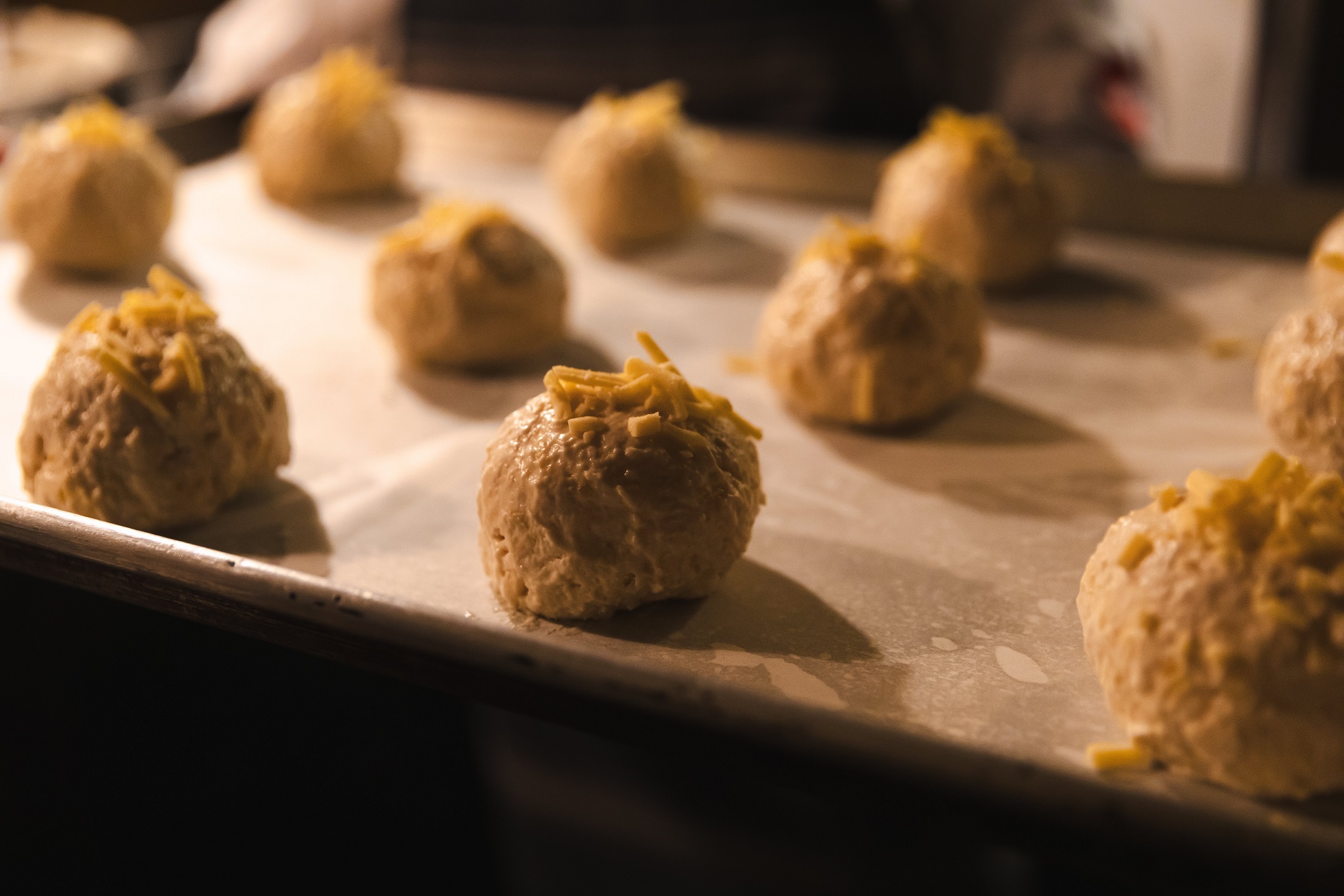
That's not how my grandmother made them.
Pastry chef James Martin must have heard that quite a few times when showing classes of keen would-be scone-makers how he makes Pravda Cafe & Grill’s famous, in Wellington, cheese scones.

For the past few years he has been sharing the cafe’s scone secrets with Wellington On a Plate participants in an early morning baking class.
Many Kiwis have grown up being taught to cut the butter in to the flour, have a light hand when patting the dough out and cutting them in to tidy rectangles.

Pravda scones are made with a secret ingredient — clarified butter — so there is no need for that painstaking chore of rubbing the butter into the flour. All it requires is to mix the butter with the cheese, tasty of course, the self-raising flour, salt and full-fat milk with a light hand. Don’t over-mix, advises Martin, and don’t skimp on the cheese.
"You want to see the cheese in it, it’s what give them the flavour and texture"

So we each get to make two scones ourselves. We weigh out the dough before rolling it — the technique is a lot trickier than Martin makes it look. Then we place it on the tray and add a generous pinch of tasty cheese on top to give it a nice glossy top as it slides over the scone in the heat of the oven.
Remarkedly, given there are 12 of us in the class, the scones are all pretty much similar. Into the oven they go at 180°C on fan bake for 18 minutes.

With the ping of the oven, we all get to taste our scones along with a cuppa. Lovingly lavished with butter, the light and cheesy scone is very tasty. Even better, we are handed another hot from the oven to take home.
— Rebecca Fox was a guest of Wellington On a Plate and Pravda Cafe













